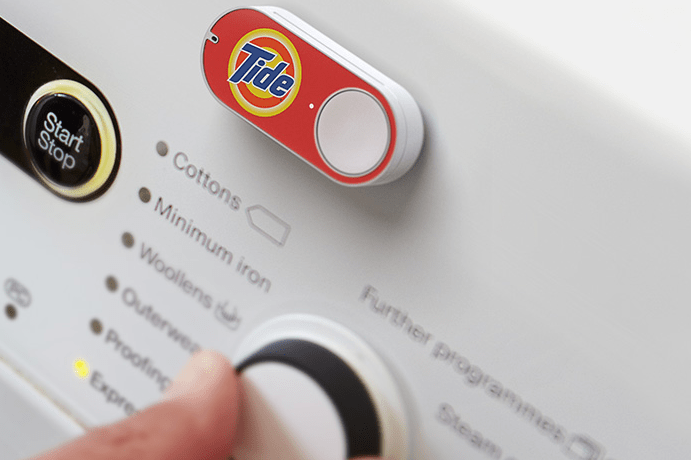
Amazon’s super-simple ordering buttons are apparently starting to catch on, with the company revealing on Tuesday that orders placed using the diminutive device have increased five-fold on a year ago.
But Amazon being Amazon, we’re not told exactly how many orders have been placed, or indeed how many Dash buttons the ecommerce giant has sold since it launched the platform in July, 2015.
Anyway, it’s interesting to learn that the devices appear to be getting a little more attention these days, especially as research published earlier this year by Slice Intelligence suggested that only 50 percent of people who bought the buttons were actually pressing them. Now if it can only think of a way to mobilize that other 50 percent …
Amazon’s internet-connected Dash devices let you order a particular item from its enormous online store with a single press. Lots are available – around 200 apparently – with participating brands including the likes of Tide, Maxwell House, Kraft, and Gillette.
Place them in convenient spots around your home – yes, the Tide button should go by the washer – and press to place an order when you’re running low on supplies of that particular product.
The one-touch shopping buttons are available to Prime members in the U.S., U.K., Germany, and Austria at $5 a time, though they’re effectively free as you receive a $5 credit with your first order.
If you’re a Dash addict, your home could really be about to fill up with the device, as Amazon also announced this week that it’s just added another 60 buttons to its already expansive line-up. New brands include Cheez-It, Folgers, Meow Mix, Milk Bone, Pop-Tarts, Powerade, and ZonePerfect.
The Seattle-based company also uses similar technology for its Dash Replenishment service. This allows manufacturers of connected devices to fit their machines with the same functionality, allowing orders for new supplies to be automatically placed when the device detects it’s running low. This makes it idea for machines like coffee makers and printers, and means you don’t even have to press a button to place an order. That’s right, you can now order stuff from Amazon without even realizing it – until you see your credit card statement, that is.


